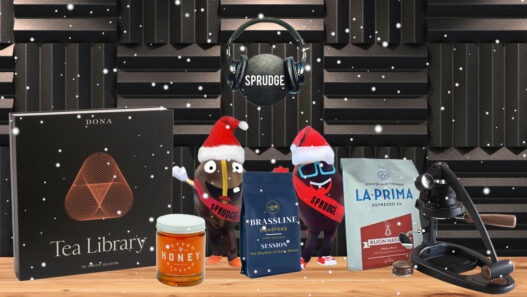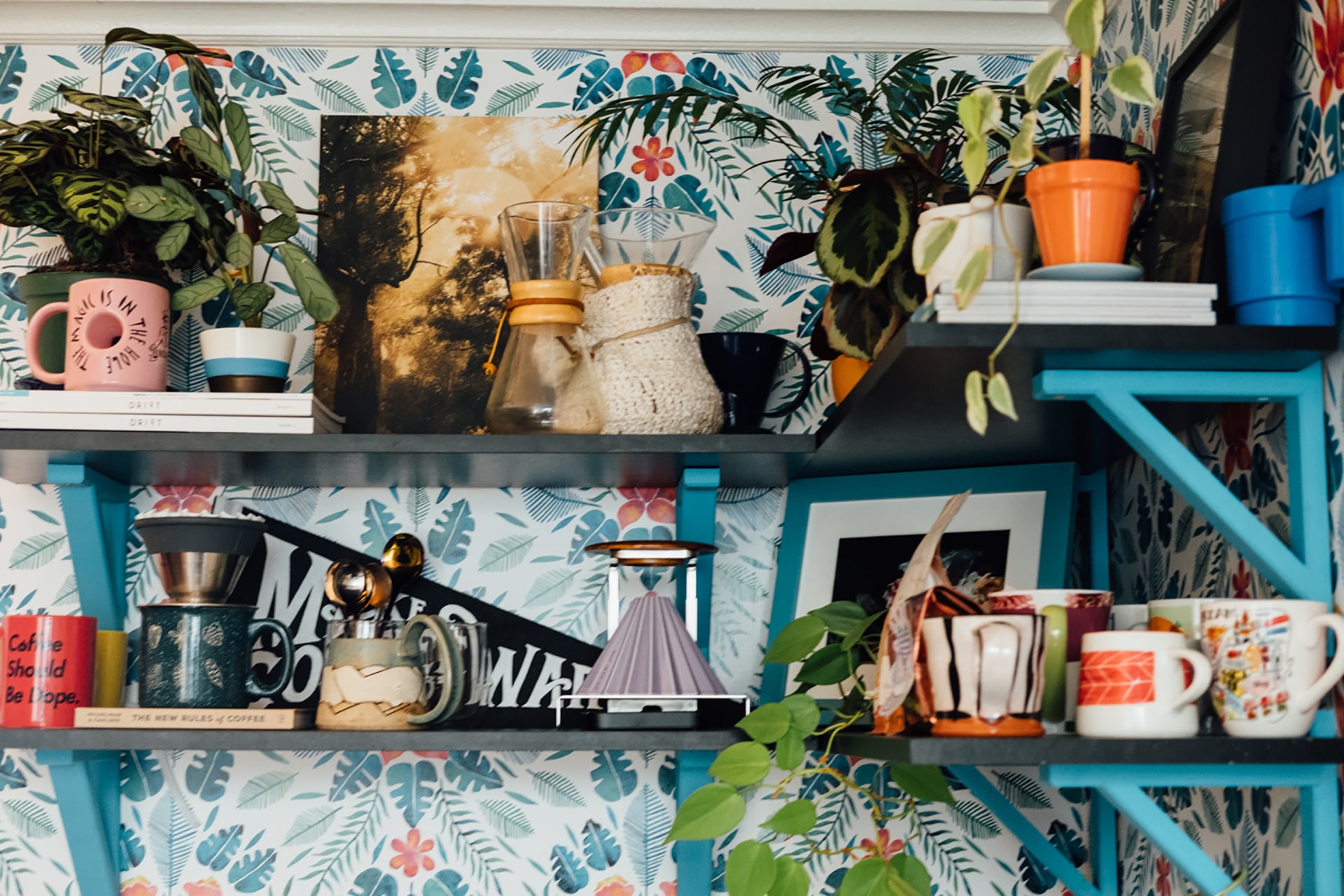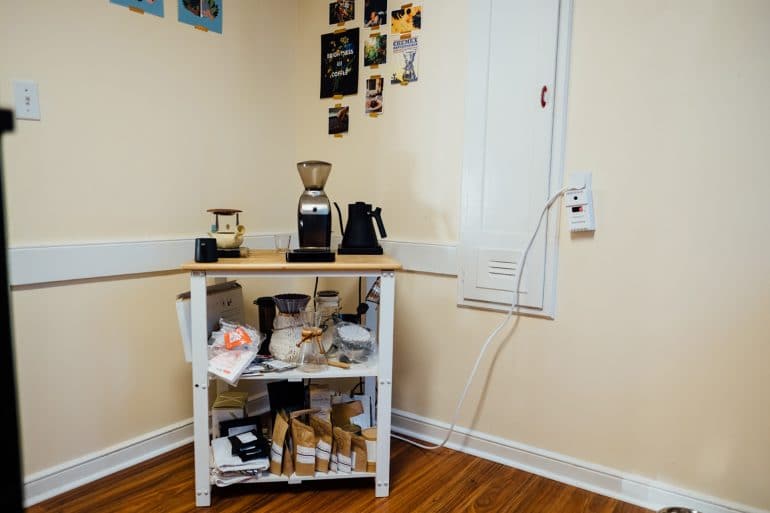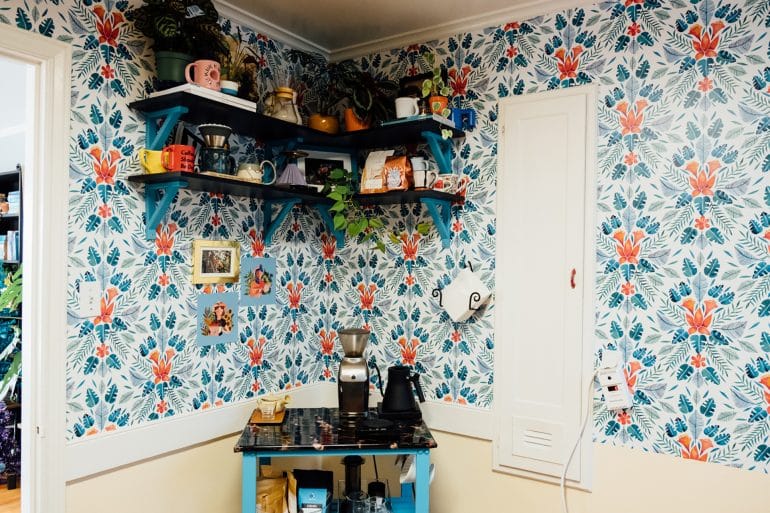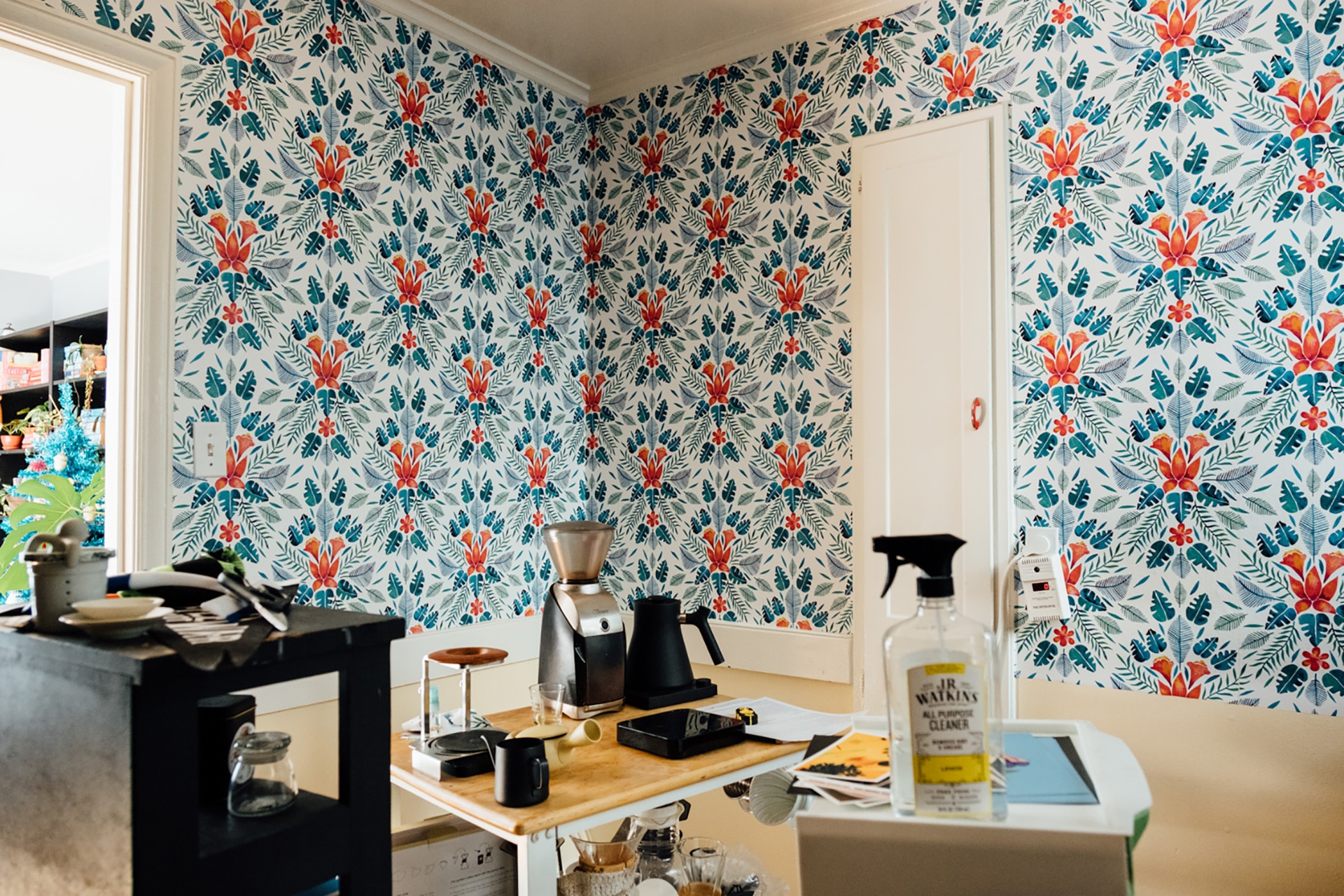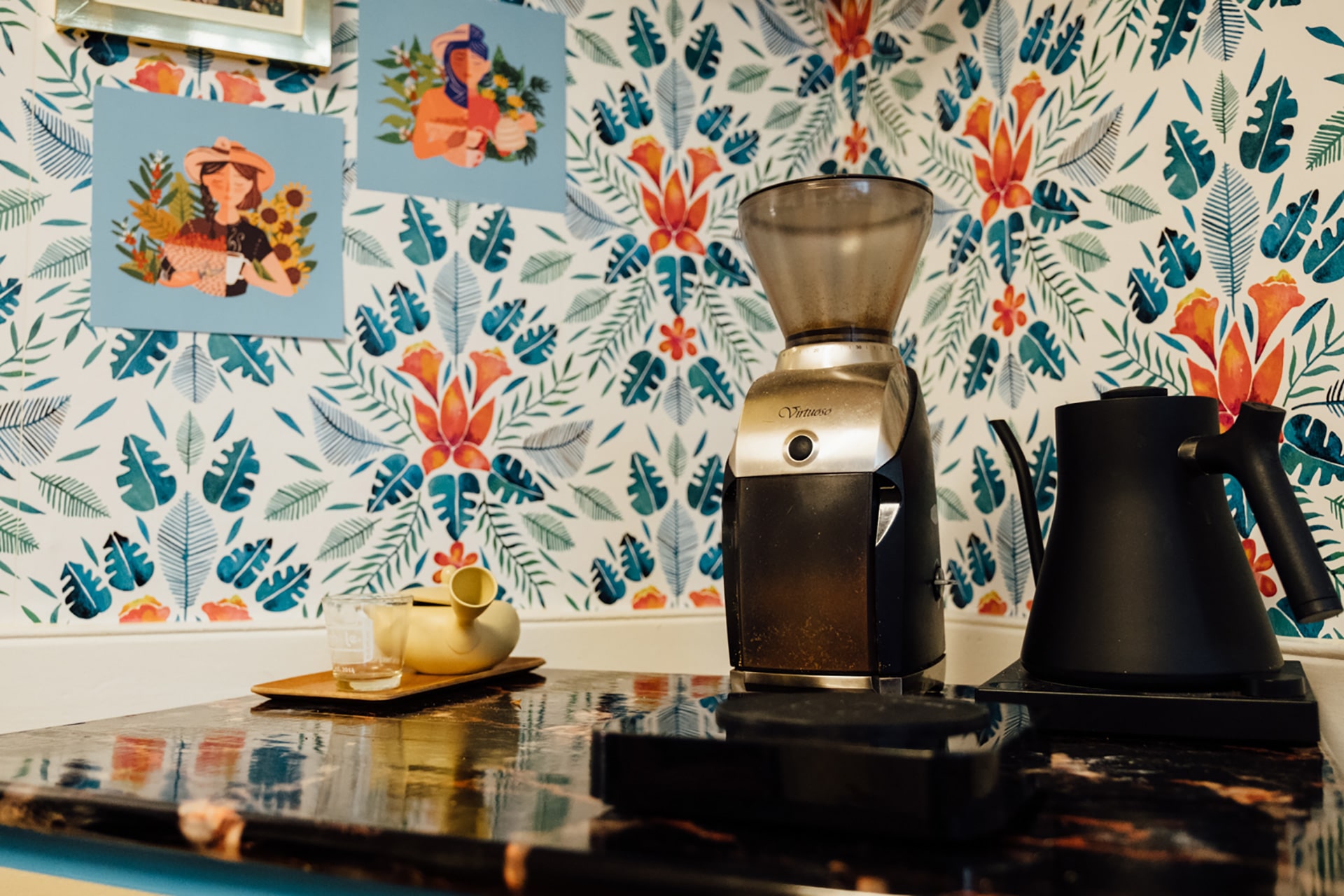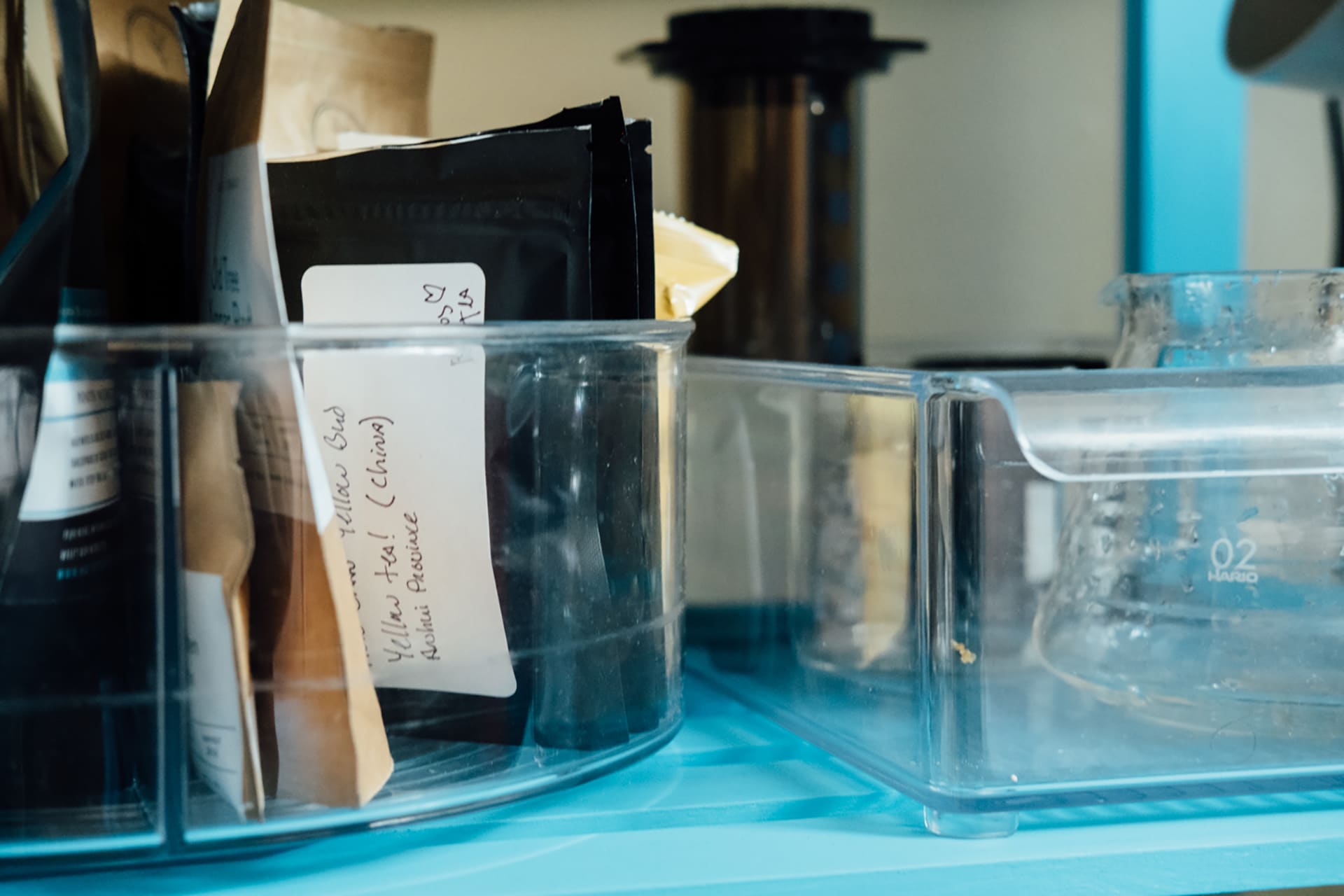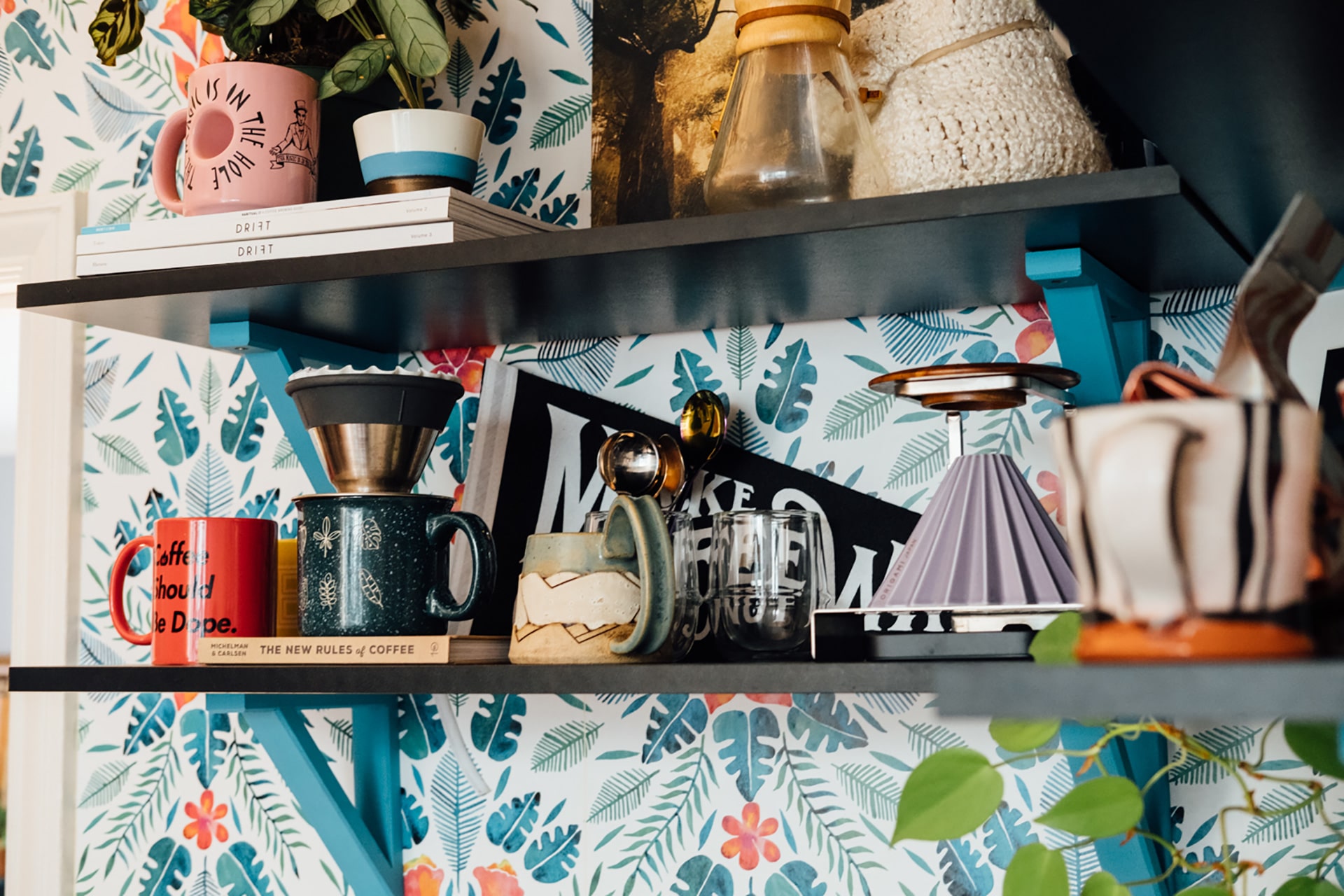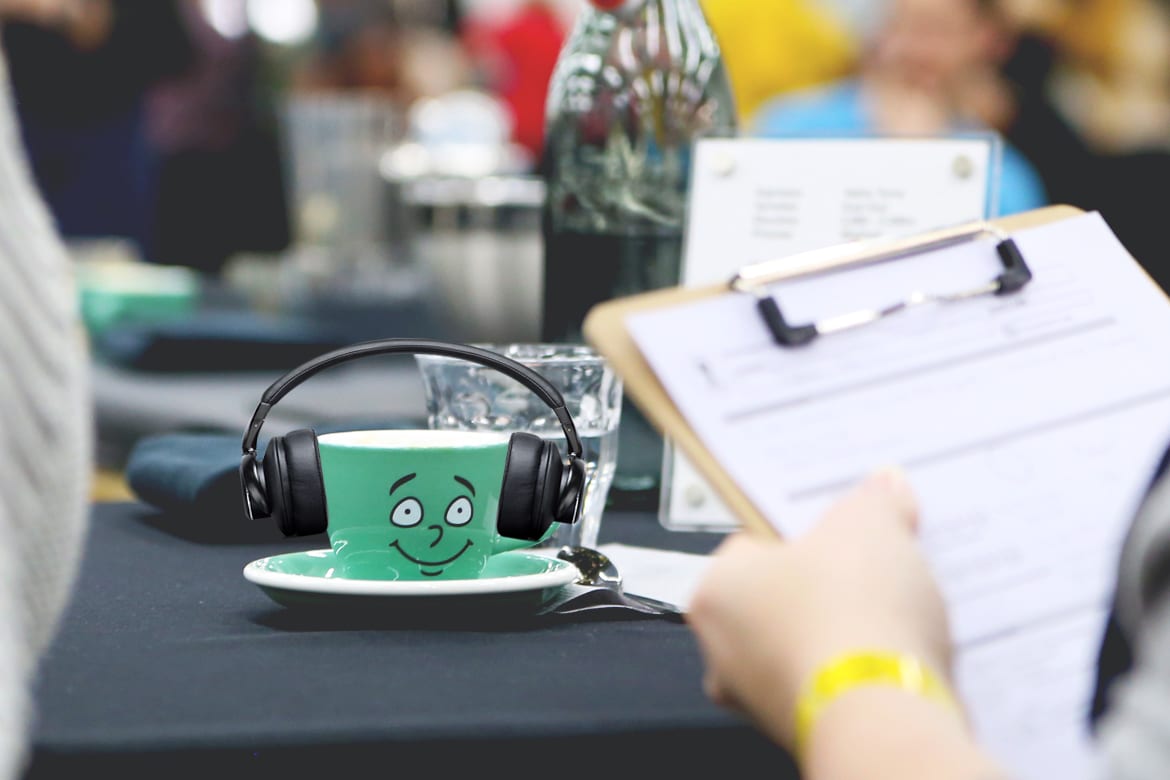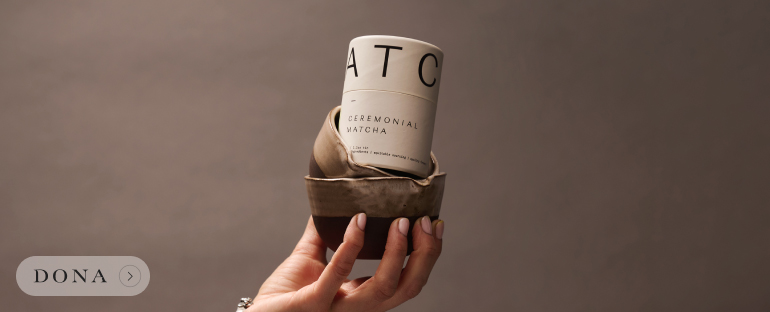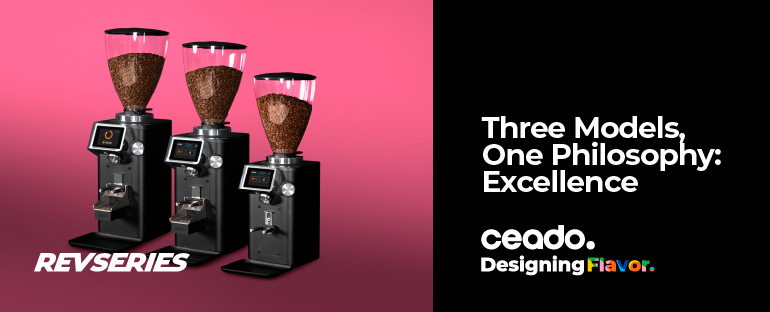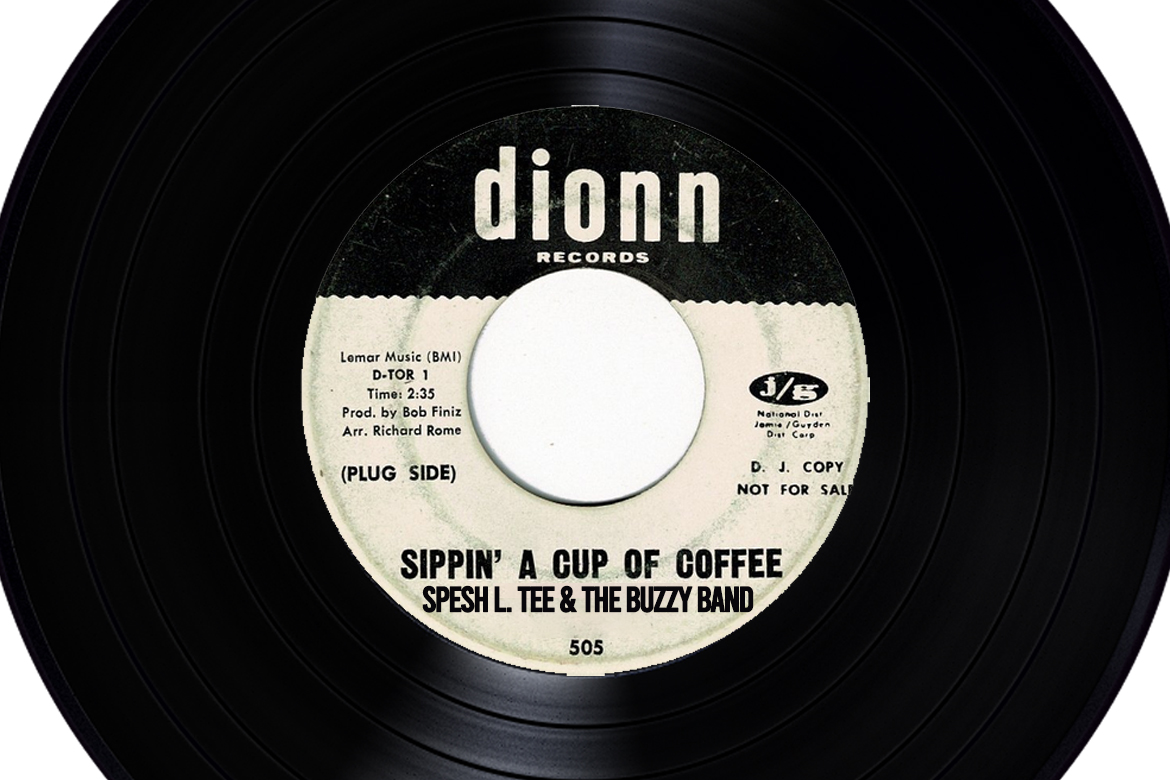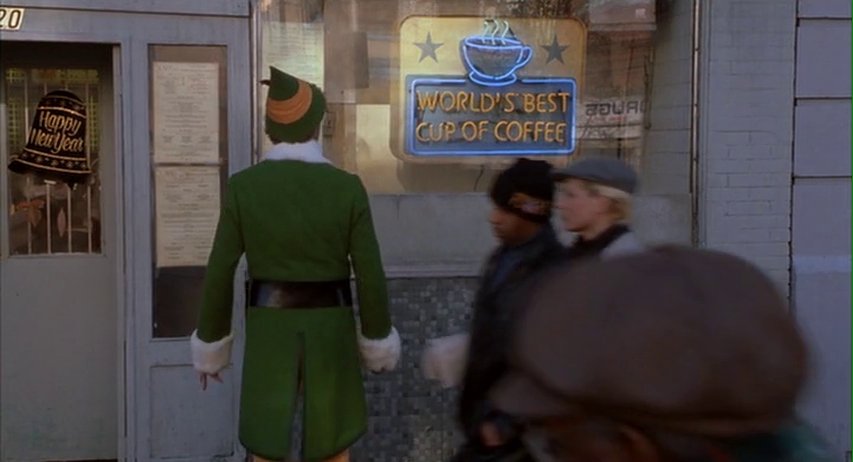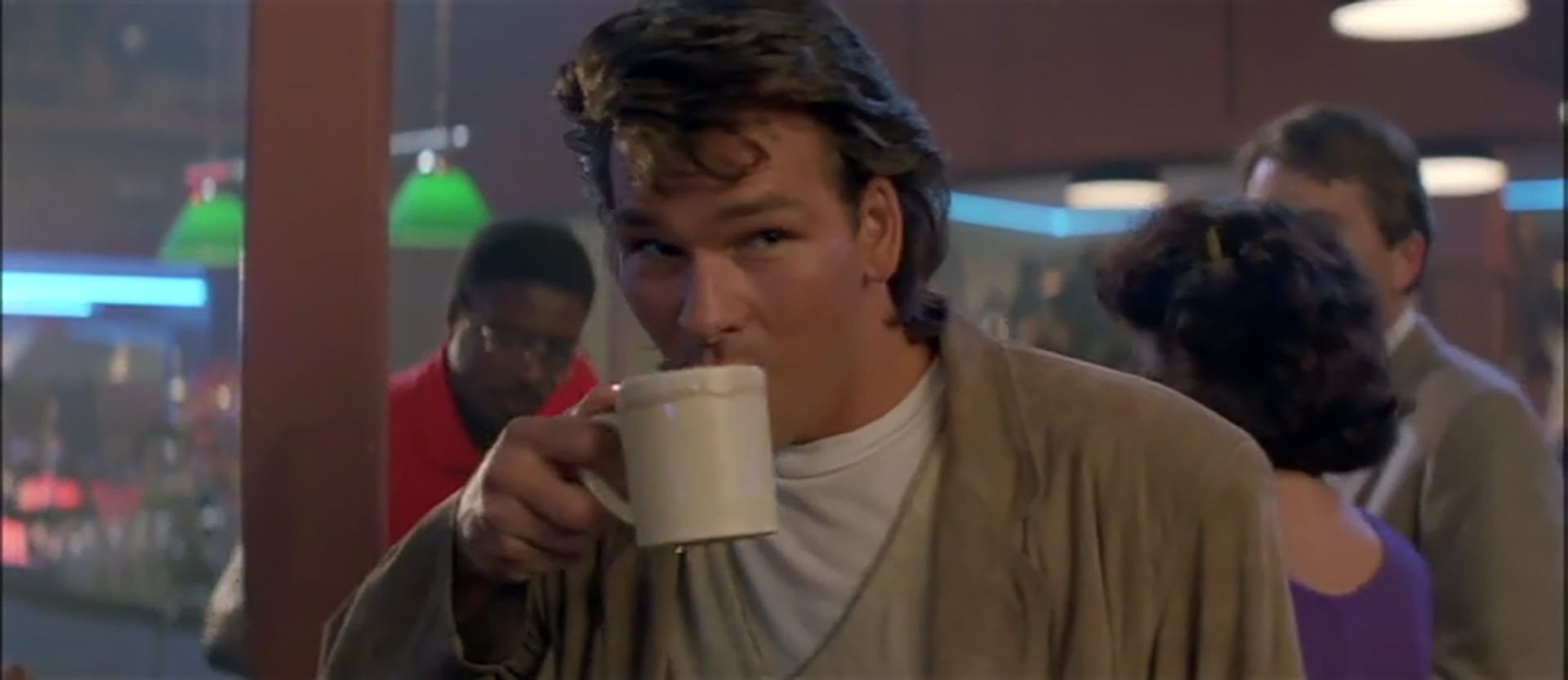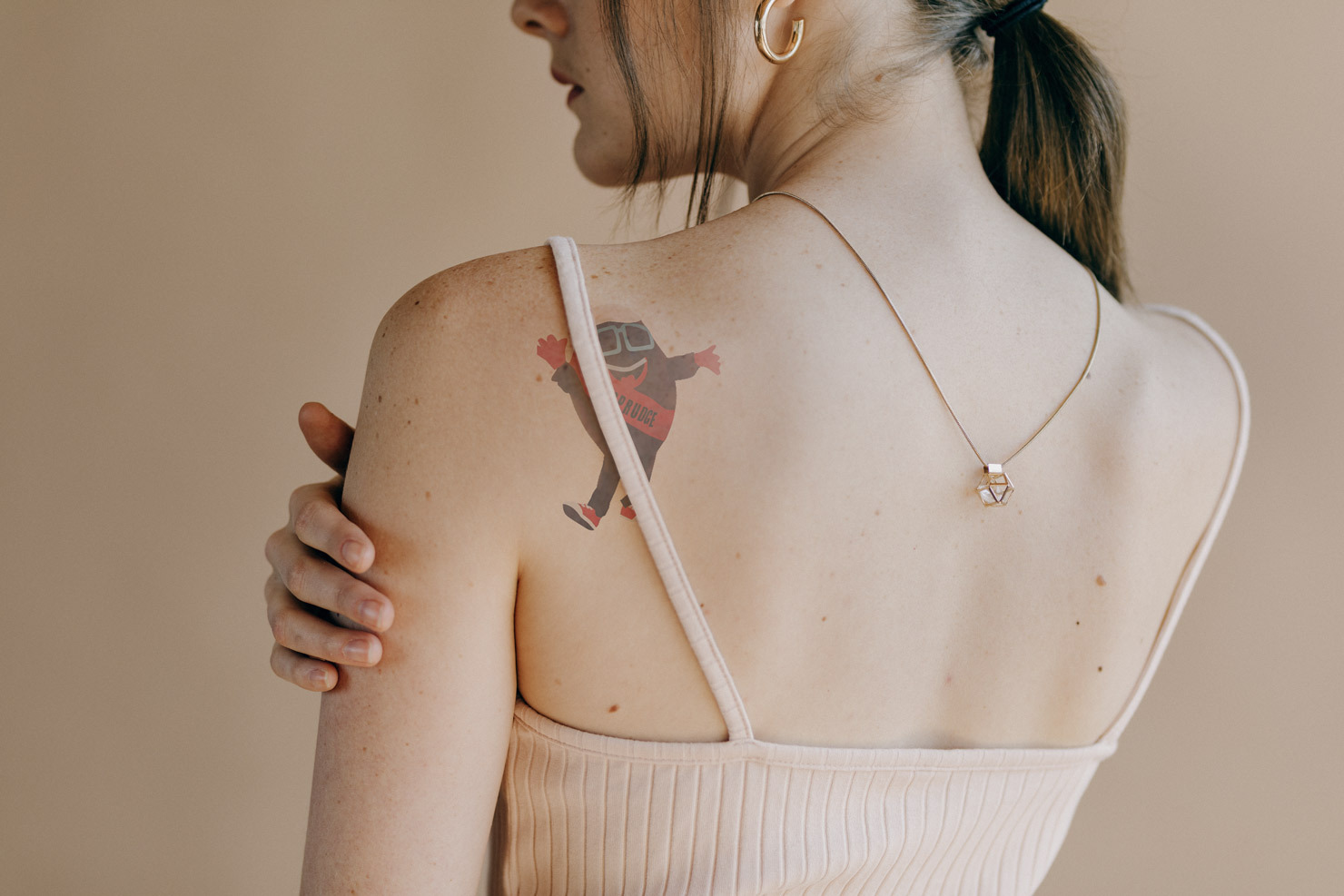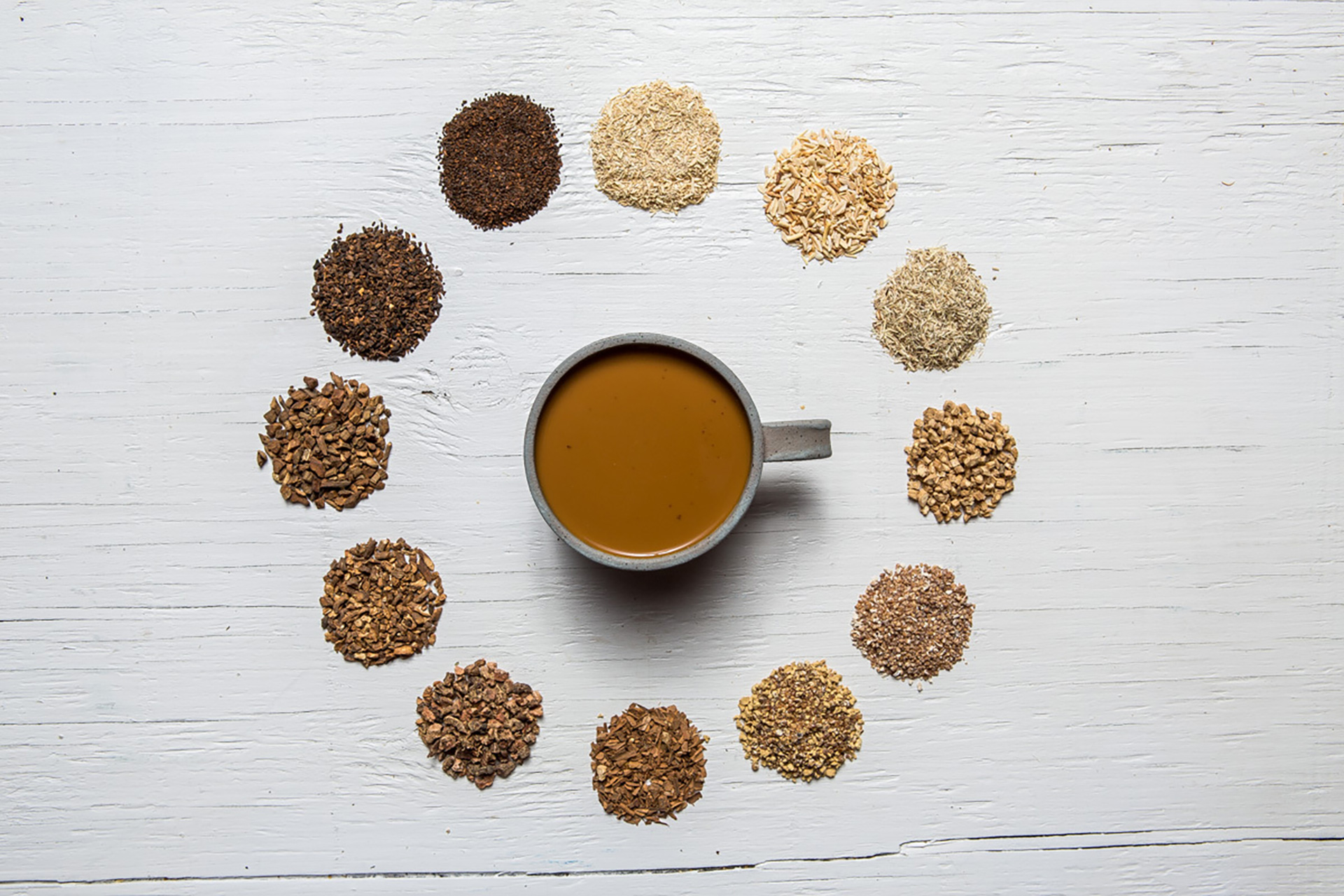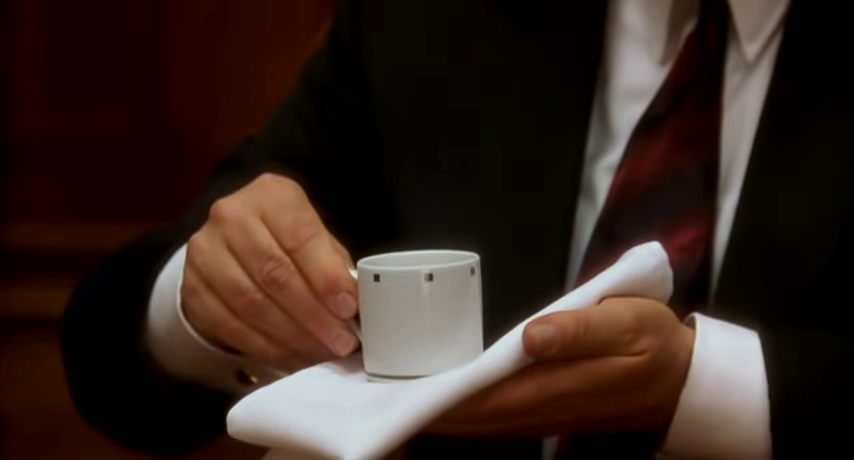The perfect home coffee bar is something to aspire to.
When you get deep into a hobby, you eventually accumulate a lot of stuff, and coffee is no exception. Sometimes you get your own counter space or cabinet, other times you make do with what you have. In the home coffee making world, there’s a fine line between function and beauty: you want your coffee area to look good, but you also need it to work for your routine. Coffee is personal, and there’s no way we all have the same wants and needs, which is why I think it’s important to say up front that this isn’t one of those “here’s how you should design that coffee space” stories. Instead, I want to explore function as a way for you to figure out how to design a space that works for you, to make coffee at home in a way that best fits your needs and expresses your relationship to the drink we all love.
As the pandemic continued past those first few weeks, some people turned to making bread, or finding themselves. I went deep into home decor. I moved into my current apartment in January 2020 and the first thing that got set up (after my bed) was my coffee cart. It functioned as a space but was in no way Instagrammable. This had to change.
I am absolutely not an interior designer. But this is how I approached turning my own coffee corner into a beautiful one.
I’ve read Marie Kondo’s book and watched the show “Tidying Up with Marie Kondo.” I watched “The Home Edit” (THE) and bought their first book. I felt ready.
Design-wise, I started with research. On Instagram, I created a new collection solely for inspiration (check out #homebarista) and I did the same on Pinterest. Both the KonMari Method and THE begin with the idea of taking all the things and sorting out the ones you don’t want or need. “Keep only those things that speak to your heart,” writes Kondo. “Then take the plunge and discard all the rest.” This is the time to donate your unused coffee equipment, perhaps to an organization like Getchusomegear.
Features and constraints came next. Your list will inevitably be different from mine. Some of my must-have features and constraints included:
- Can be photographed. I’m a photographer and a plant parent. I think about light a lot. In this case, I observed the light in the area throughout the day and thought about the angles at which I want to take photos. This helped me determine placement of the cart and shelves.
- Minimal budget. Purchase if needed*. (*I am writing this during a time when thrift stores aren’t open). When possible, I recommend upcycling, buying local, and thrifting. While I did end up placing an order for a baker’s rack, I also upcycled my current cart. Marble contact paper and a fresh coat of paint gave it some new life.
- Renter-friendly. That meant as few holes drilled as possible and anything on the walls could be removed. Have you heard about the magic that is peel-and-stick wallpaper? It’s an easy way to add style to your space without worrying about messy residue when you eventually remove it.
In talking to friends with home coffee bars, one issue stood out. What the heck do you do with all these filters? Between the flat bottoms, cones, AeroPress, and Chemexes of all sizes, I was at a loss. My stop-gap measure was to keep using what I’ve used for a decade: a thrifted garden hose holder that could hold most of my flat filters. If anyone has a magical method of storing all of the filters, I’m all ears.
Beyond the actual organizing, there are other things to keep in mind as you design the space for you.
- Workflow. Picture yourself making that morning cup of coffee. What do you reach for and how do you make your coffee? Sometimes design can get in the way of function. Your favorite mug might be beautiful up top but do you really want to grab a stool every time you want the mug? If you’re looking to upgrade equipment, read through Sprudge’s all-encompassing equipment guide.
- Other uses. In small spaces, areas need to be multifunctional. You might need the area for appliance storage or to transform it into a bar cart whenever we’re able to host parties again. For me, my cart needed to be easily moved in case I wanted to change photo angles.
- Coffee storage. While I personally vacuum seal and freeze my coffee, there are also plenty of storage containers out there that keep most air out and your coffee fresh.
- Dripper storage. How many methods of making coffee do you have? I’ll wait while you count. My drippers got hung on hooks or placed on the shelves. Pegboards and bars with S-hooks also work well.
- Furniture. Don’t be limited to only kitchen furniture. Bookshelves, cabinets, and dressers can be good choices if they have the features you want.
One big takeaway I had from The Home Edit was to use bins whenever possible. The carafes got a bin, all the tea was placed in a turntable, and anything else extra went into the lower baskets.
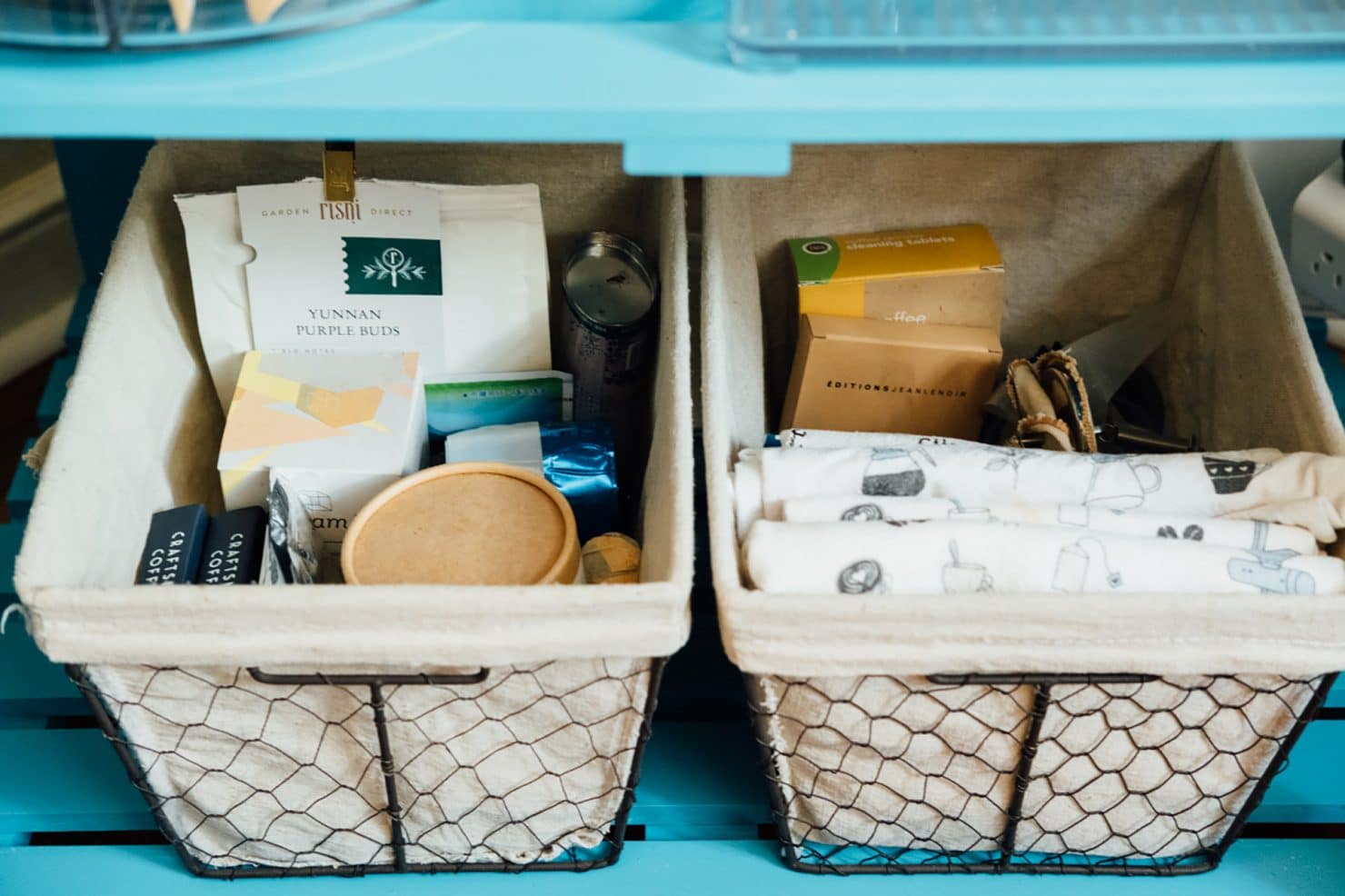
And lastly, the execution. For my shelf styling, I used these tips to put it all together. Because I do better when a design is staring at me in the face, I pulled existing bins, plants, photos, and other decor onto the shelves just to see how they would look. And now I know for sure that I need to get another turntable.
I think one of the things that people get caught up in is trying to get it all together in a short amount of time. It’s okay to build your coffee area slowly. It’s also okay to veer from all the design rules. At this time, my purchases here have only been the wallpaper, contact paper, and various screws. In the end, the person using this area the most is you (and maybe other coffee geeks who you live with). My personal aesthetic is not for everyone but it works for me and that’s all that matters.
Jenn Chen (@thejennchen) is an Editor At Large at Sprudge Media Network. Read more Jenn Chen on Sprudge.








